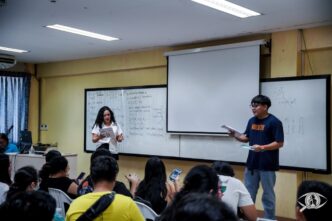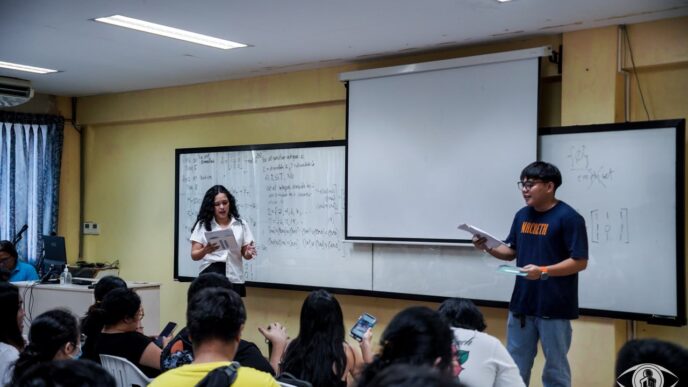Nat’l Literature Month 2025
By Lysander Tiu
Asst. Prof. Angela Gabrielle Fabunan of Silliman University (SU) English and Literature Department shared how institutions influence 21st-century Filipino poets during her talk at the National Museum of the Philippines (NMP) – Dumaguete last April 15.
The lecture, titled “Muse and Metaphor at the Museum,” was organized in partnership with the SU Edilberto and Edith Tiempo Creative Writing Center, in celebration of the 2025 National Literature Month.
Fabunan presented her research paper “Call-and-Response: A Theory of Form as Boundary in Formal Poetry” which examines how contemporary poets engage with tradition and innovation.
Skunk Hour and The Armadillo
Fabunan discussed the poetic exchange between Elizabeth Bishop’s “The Armadillo” and Robert Lowell’s “Skunk Hour,” highlighting their influence on one another and their ties to institutions such as Harvard College and Vassar College.
“His poem leads a trail of footprints back to hers. This is the time of year, Bishop begins. The season’s ill, Lowell echoes. These are ways in which they respond to one another,” she said.
Fabunan also reviewed scholar Pennelope Lawrence’s reflection on “The Armadillo,” stating that it serves as a political response to World War II and echoes global protest.
“The red fire in Skunk Hour marries the fire in the Armadillo. Both poems showed the slow violence within a town through fire. The fire of the skunk’s eye looking for food and the fire of the illegal balloons,” she explained.
Moreover, the speaker noted the role of institutions like the University of the Philippines (UP) and SU in shaping Filipino poets, including her own works.
A master’s degree holder in creative writing from UP Diliman, Fabunan authored a full-length poetry collection “Young Enough to Play.”
Institutions and influences
According to Fabunan, institutions such as Harvard, Vassar, and Iowa College influenced the poetry of Bishop and Lowell.
“I am aware that influence includes as well the influence of institutions. My point being, there is influence everywhere. From news to metaphor to museum,” she stated.
She also stated Juan Luna’s “Spolarium” and the work of Negros artists in its Dumaguete chapter as influences in the life and works of Filipino artists.
“Museums, as institutions, are certainly important in the creation of new works from poets. Important in the sense that they cannot be ignored,” she said.
During an open forum, Fabunan also answered questions regarding the interpretation and analogies of the poems.
The talk served as NMP-Dumaguete’s dedication to preserving and promoting literary heritage as part of the city’s bid to join the United Nations Educational, Scientific, and Cultural Organization’s (UNESCO) Creative Cities Network.




